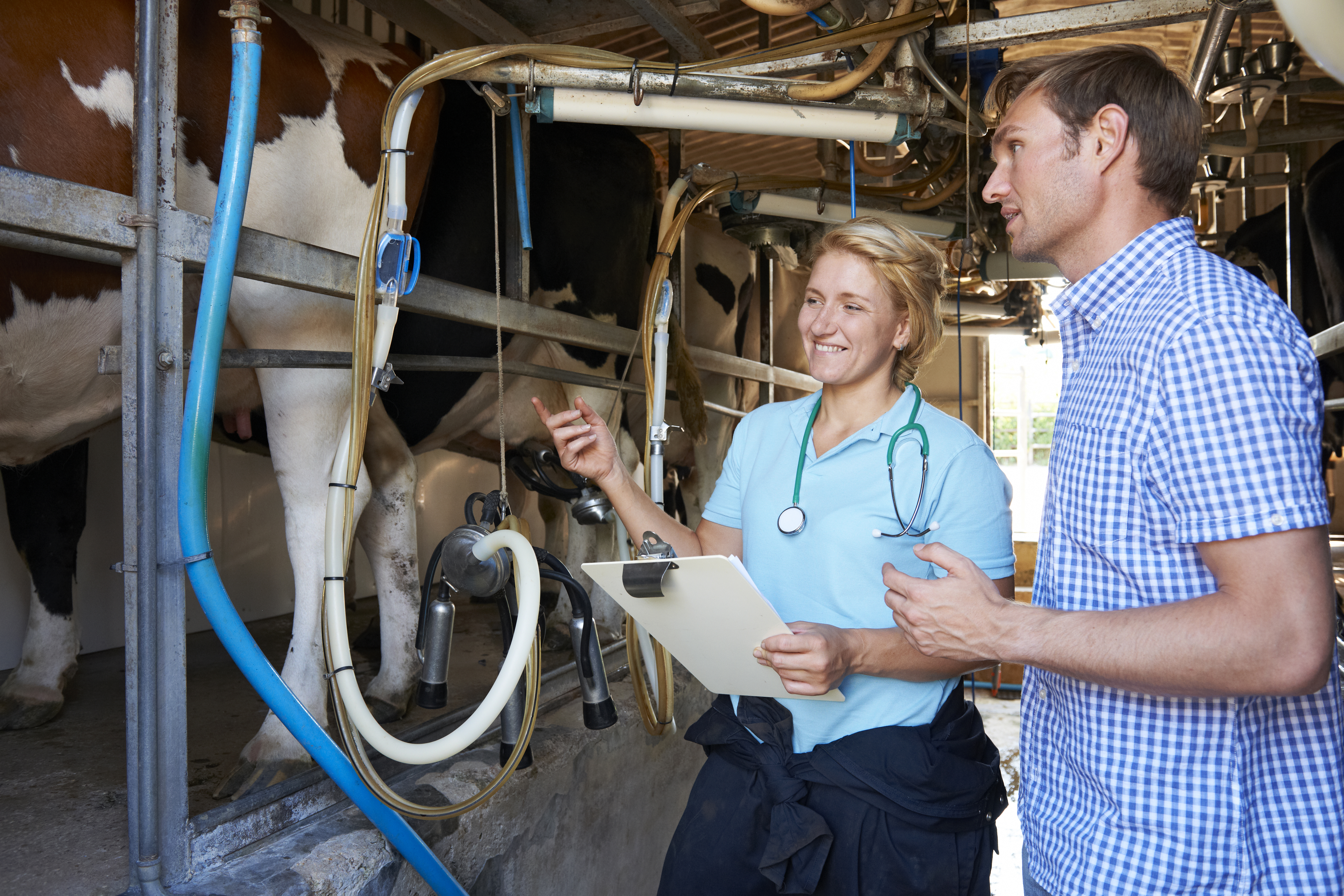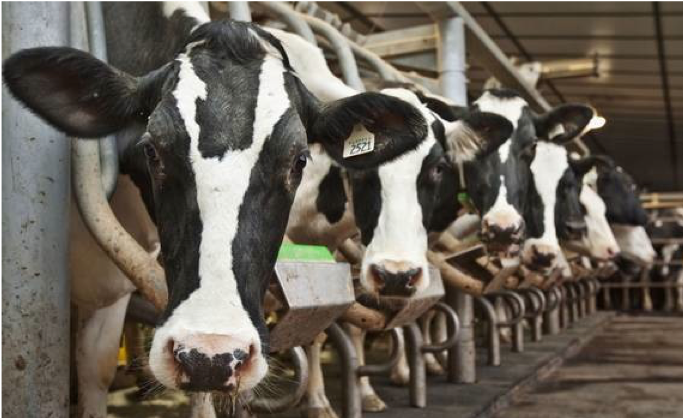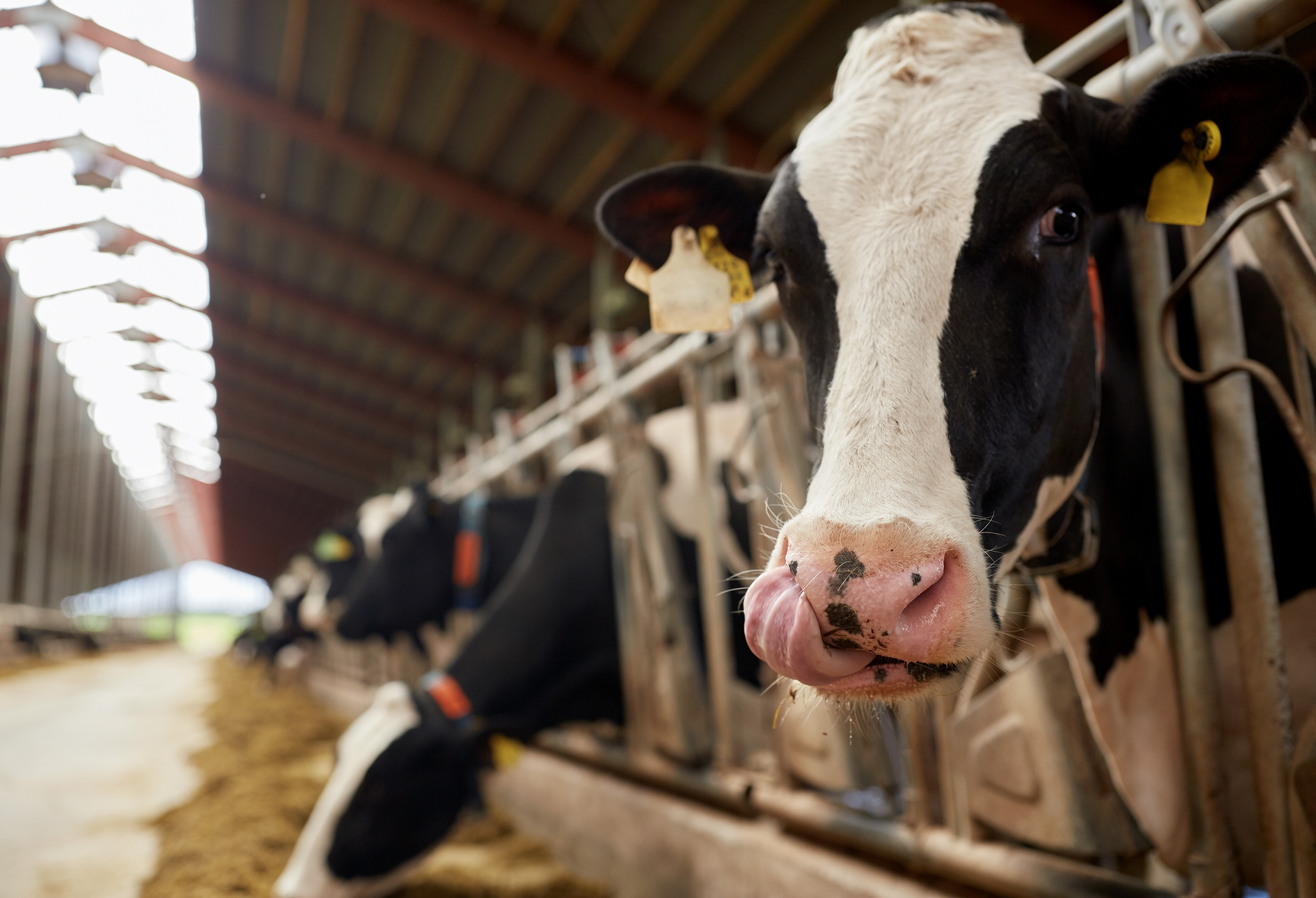Section 3 | Tackling Clinical Mastitis
Page 13 /
Aseptic Milk Sample Collection & Culture
Conversations about responsible antimicrobial use in mastitis treatment need to center on bacterial identification. Knowing what bug is causing mastitis can have a huge impact on the choice and effectiveness of therapy.
Collecting an Aseptic Milk Sample
The gold standard for identifying the offending mastitis bacteria is through the culture of aseptically collected milk samples. Aseptic collection means making sure that the milk is free from any and all contamination that might lead to errors in diagnosis. We are not just talking about manure and bedding contaminating the milk. Even by touching the inside of the sampling vial with your finger, you are introducing bacteria to the milk that would not have otherwise been there. We want to ensure that the bacteria that grows on the culture plate is actually representative of what is present in the milk so we can treat it appropriately.

The experts at the University of Wisconsin have done an excellent job of outlining the procedure:
How to Collect an Aseptic Milk Sample
Waiting for Culture Results
As the saying goes, waiting is the hardest part. One of the common concerns with the bacteriologic culture of mastitic milk is that it can take anywhere between 24-48 or more hours to get a result. Many farmers are not comfortable waiting this long, as they feel that a cure is less likely. The good news is that, for cases of mild or moderate clinical mastitis, waiting 48 hours for test results DOES NOT affect cure rates relative to immediate treatment without culturing the milk1,2.
Specifically, when farmers waited for culture results (versus treated mastitis right away), researchers found:
- No difference in clinical or bacteriologic cure of mastitis
- No difference in re-infection or recurrence of infection
- No difference in somatic cell count (SCC)
- No difference in daily milk production
- No difference in culling or death

Bottom line: waiting 48 hours for culture results from cows with mild or moderate clinical mastitis will not hurt the cow. As always, work with your veterinarian to determine the appropriate testing and treatment strategy for your herd.
The benefits of culturing cows prior to treatment are immense and include:
- Eliminating unnecessary treatments
- Economics
- You might not need to buy as much medication
- Less discarded milk
- It will help you and your veterinarian understand the root causes of mastitis on your farm
- You can better design treatment protocols appropriate to the bacteria you are seeing on your farm
- You can identify cows for which no treatment exists and manage them appropriately (e.g. milk them last, cull when feasible)

Wait… Culture Negative. What the what?
Another major frustration farmers have with culture results is the dreaded result: “no bacterial pathogens isolated”. On average, 40% of samples that are sent for bacterial culture do not grow anything.
40%
So how could it be that the cow has mastitis and we’re not able to culture anything from her milk?
There are several things that could be at play here:
- The cow’s immune system could have already rid her udder and milk of bacteria. While the bacteria might be gone, it can take several days for the udder to heal
- The shedding pattern of the bacteria could have altered. Some bacteria (like Staphylococcus aureus) are shed intermittently in the milk. This means that its levels can fluctuate over time. If the milk is sampled at a low point in shedding, milk culture might not void any growth
- Certain bugs need special culture media to be identified. Bugs like Mycoplasma bovis require specific conditions for growth that might not be a part of some normal lab diagnostic procedures
- The sample was collected or stored improperly. Overuse of alcohol on teat ends could eliminate bacteria while it is being collected
Researchers have studied how to manage these cows that have “no growth”. To make a long story short — antimicrobials should NOT be used in mild to moderate mastitis cases where there is no bacterial growth1,2,3. There is absolutely no proven benefit to using antimicrobial medications if you cannot culture bacteria from the sample. Period.

References
- Lago A., Godden S.M., Bey R., Ruegg P.L., Leslie K. The selective treatment of clinical mastitis based on on-farm culture results: I. Effects on antibiotic use, milk withholding time, and short-term clinical and bacteriological outcomes. J. Dairy Sci. 2011;94(9):4441-56.
- Lago A., Godden S.M., Bey R., Ruegg P.L., Leslie K. The selective treatment of clinical mastitis based on on-farm culture results: II. Effects on lactation performance, including clinical mastitis recurrence, somatic cell count, milk production, and cow survival. J. Dairy Sci. 2011;94(9):4457-67.
- McCarron J.L., Keefe G.P., McKenna S.L.B., Dohoo I.R., Poole D.E. Laboratory evaluation of 3M Petrifilms and University of Minnesota Bi-plates as potential on-farm tests for clinical mastitis. J. Dairy Sci. 2009;92(5):2297-305.